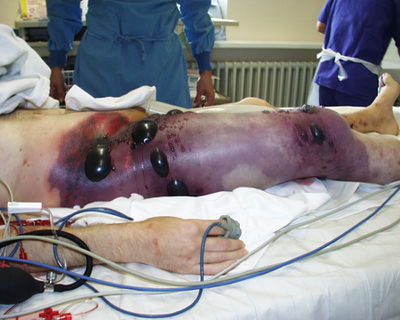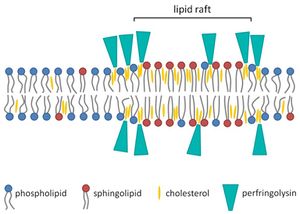The Role of Clostridium perfringens Toxins in Gas Gangrene
What is Gas Gangrene?
By Marysol Arce

Other examples:
Bold
Italic
Subscript: H2O
Superscript: Fe3+
Introduce the topic of your paper. What is your research question? What experiments have addressed your question? Applications for medicine and/or environment?
A citation code consists of a hyperlinked reference within "ref" begin and end codes.
[1]
Alpha Toxin (PLC)
Include some current research, with at least one figure showing data.
Every point of information REQUIRES CITATION using the citation tool shown above.
All strains of C. perfringens produce the alpha toxin, also called CPA or PLC. The alpha toxin cleaves molecules from the surface the host cell's’ phospholipid bilayers and disrupts the membrane’s functions, which then promotes cell lysis and death.
Perfringolysin O (PFO)
Include some current research, with at least one figure showing data.
All strains of C. perfringens can produce the toxin perfringolysin O (PFO). This toxin is part of a pore-forming toxin family, the cholesterol-dependent cytolysin (CDC) family. PFO oligomerizes at the host cell’s surface to form a pore complex and then inserts itself into the cell membrane to form a large pore. The formation of this large pore disrupts the cell membrane, which causes cell lysis. But has been thought that cell lysis is not the main biological effect of this toxin on infected tissue. PFO, as well as CPA, prevent white blood cell influx at the site of infection. Because the body’s immune system is not able to fight the infection, this toxin aids in the decay of flesh and tissue. Although the alpha toxin is critical to the virulence, PFO is not. Although it may not be essential, it is synergistic with CPA. Both act together and boost the effect of the disease to speed up necrosis.

How Do These Toxins Help C. perfringens Persist and Spread in the Body?
Include some current research, with at least one figure showing data.
